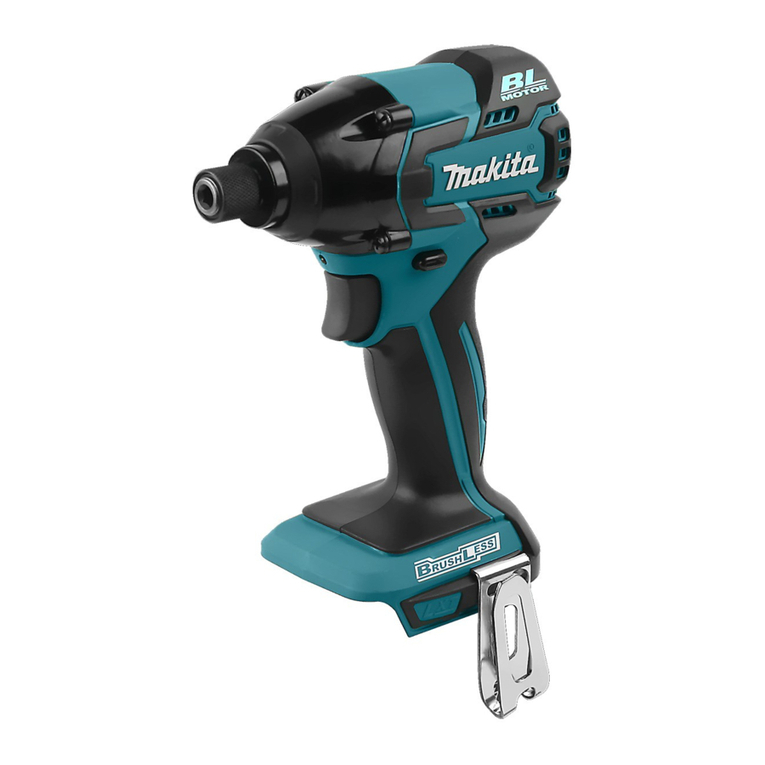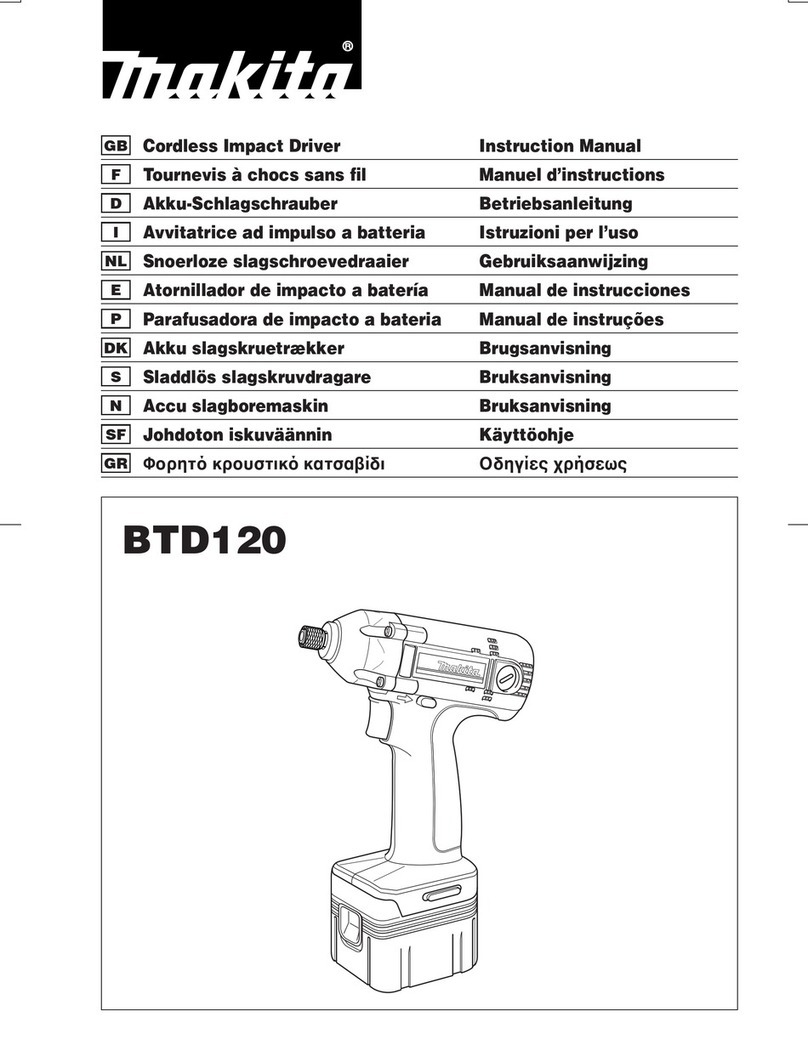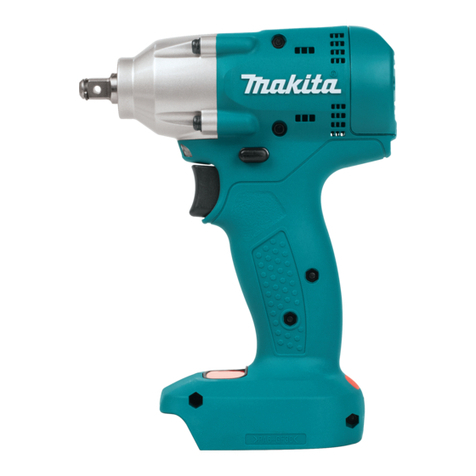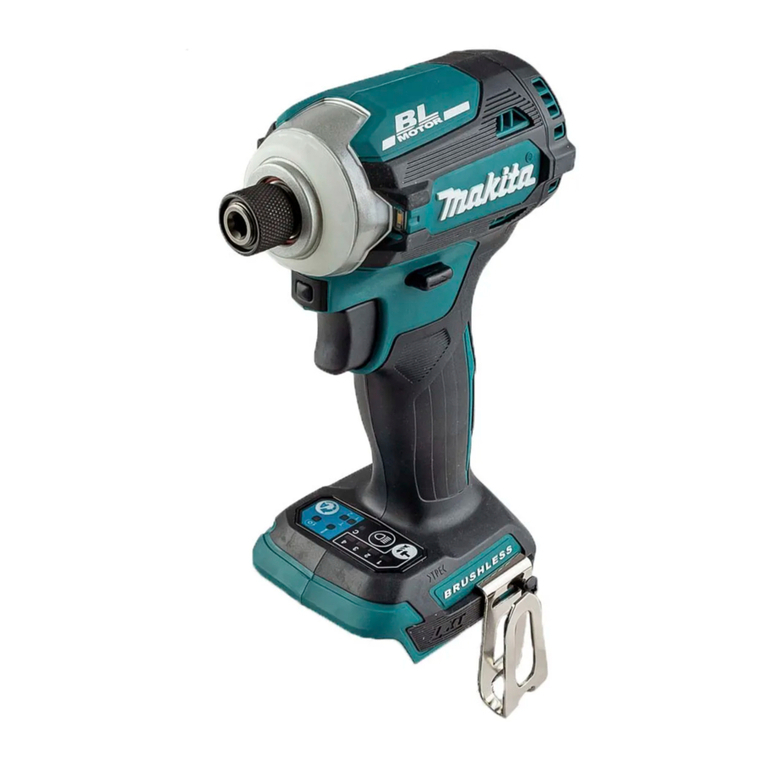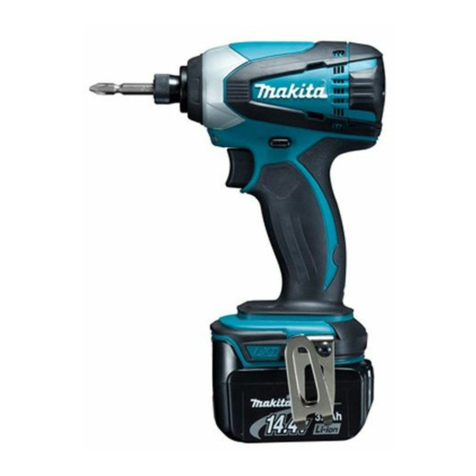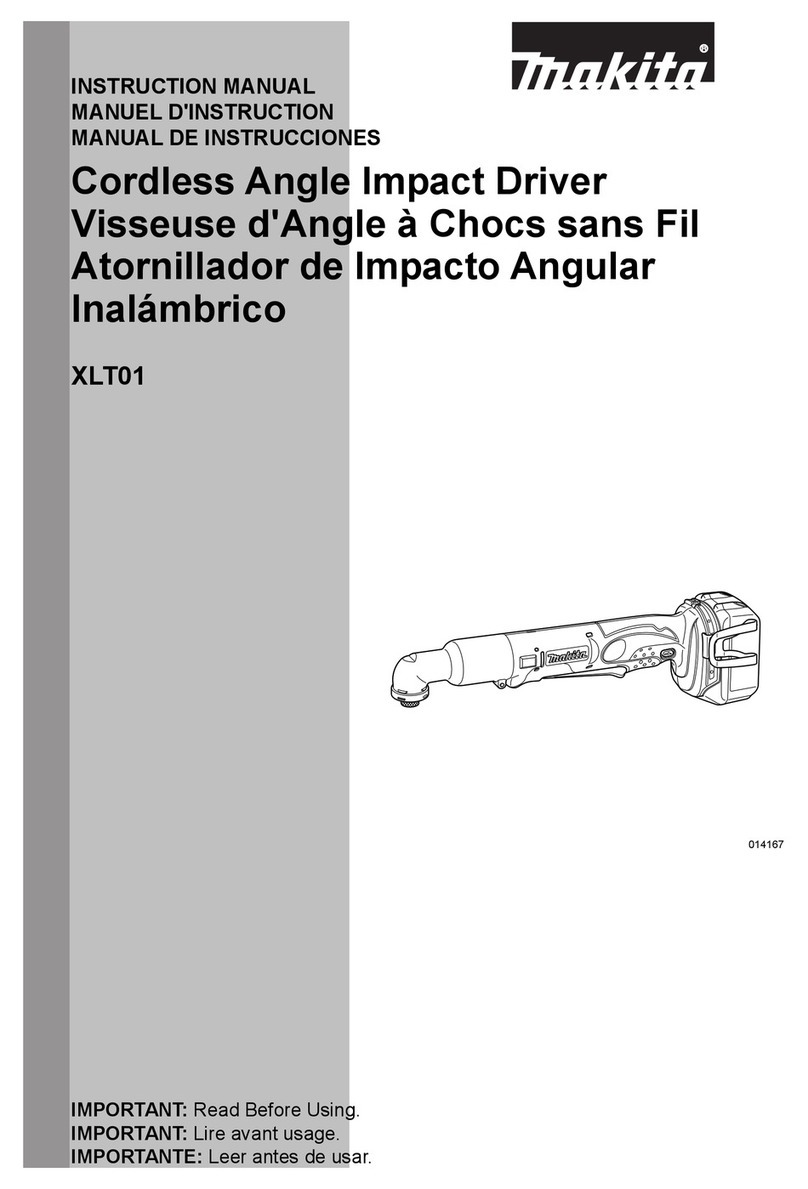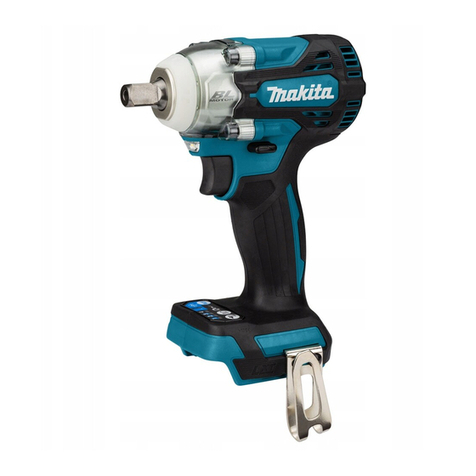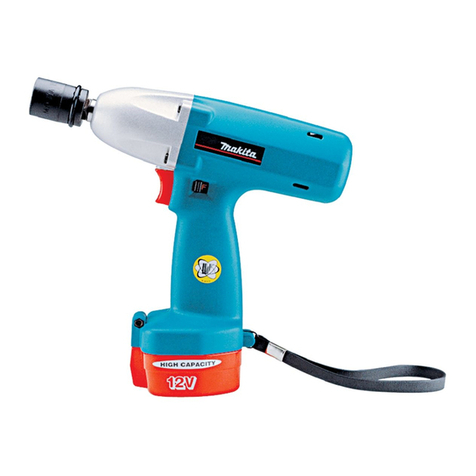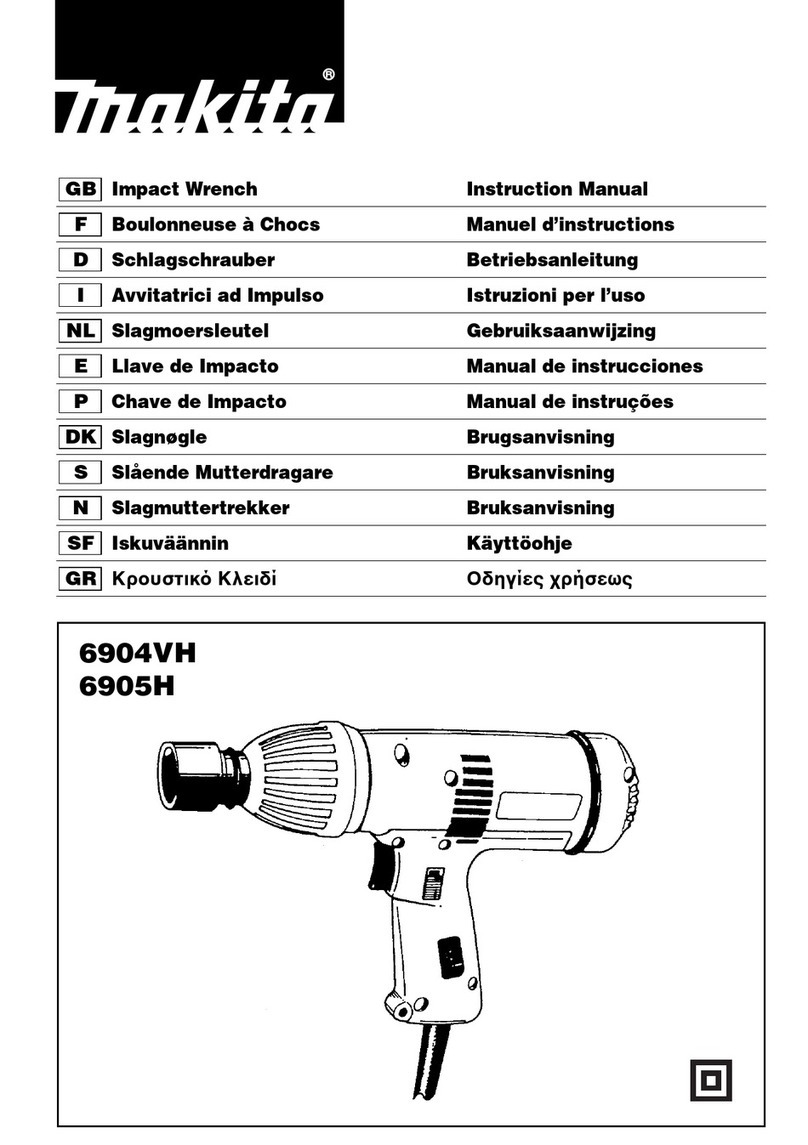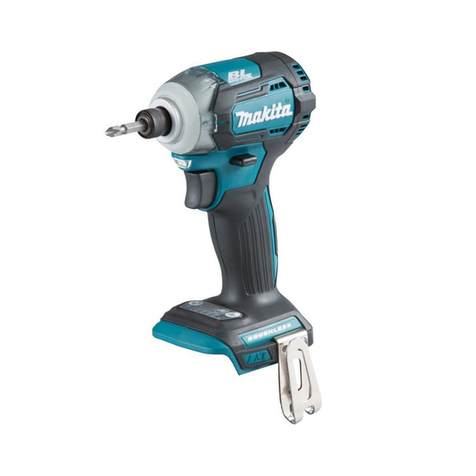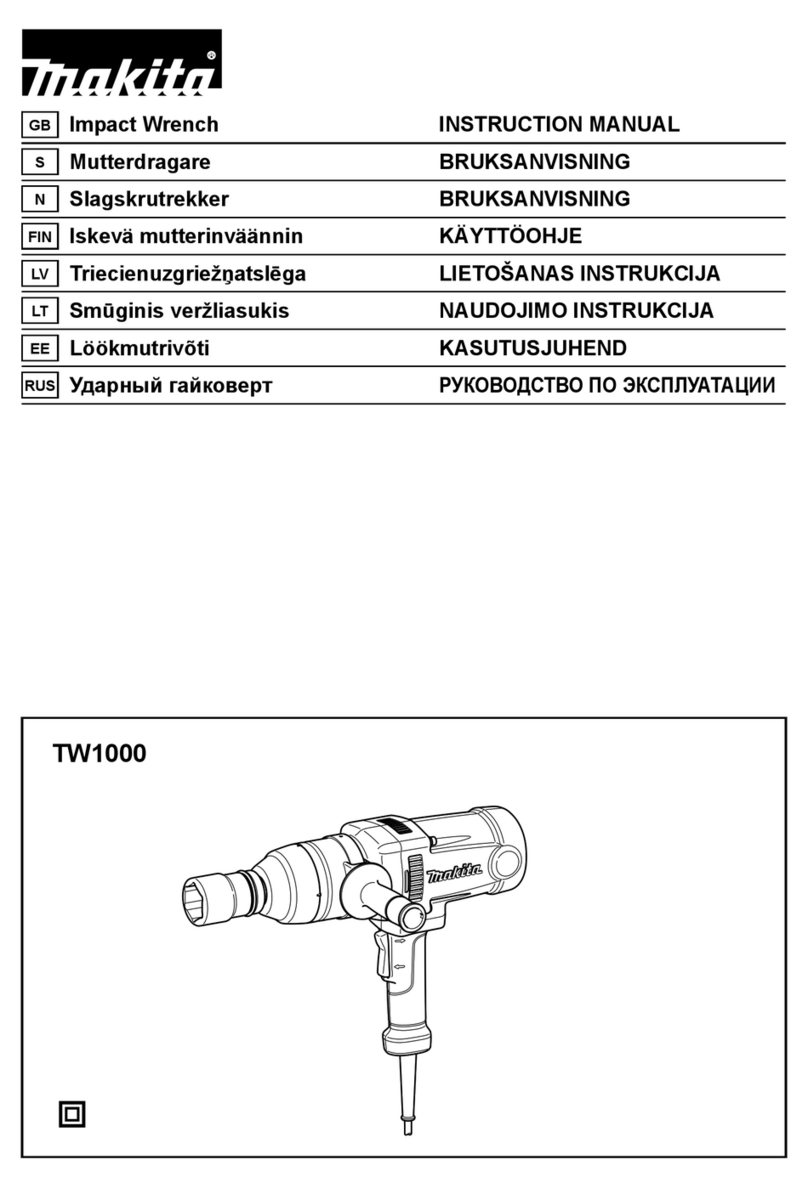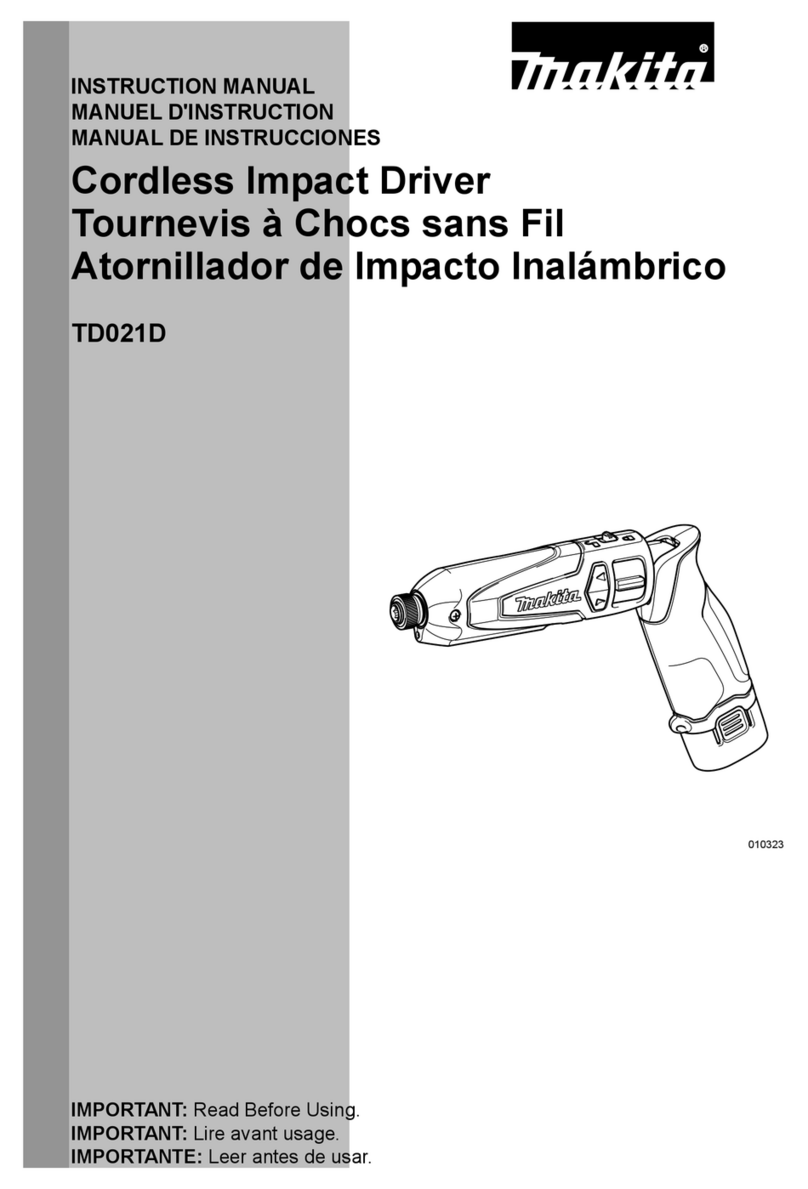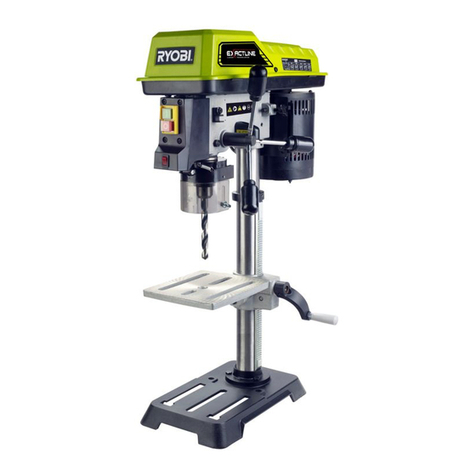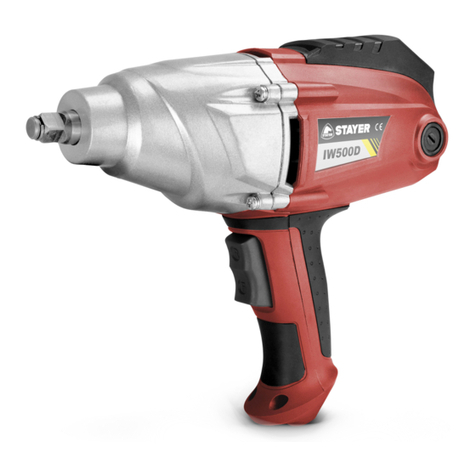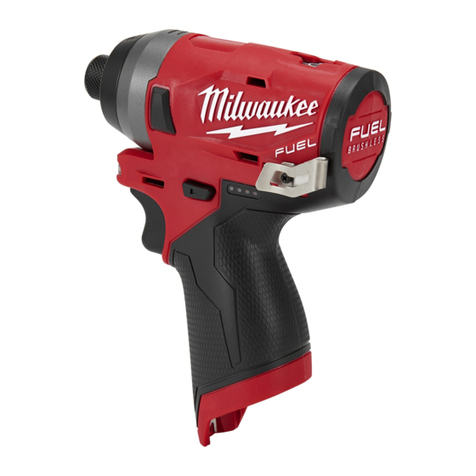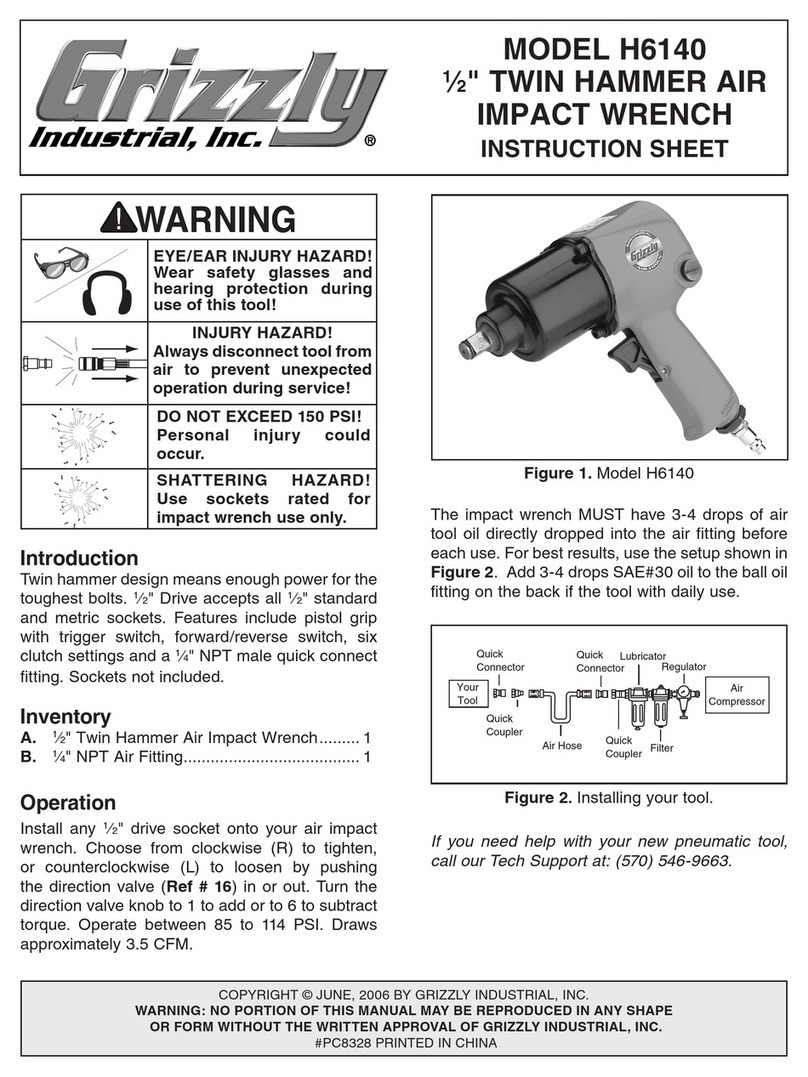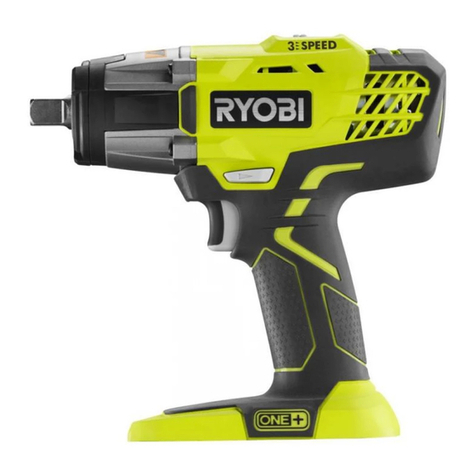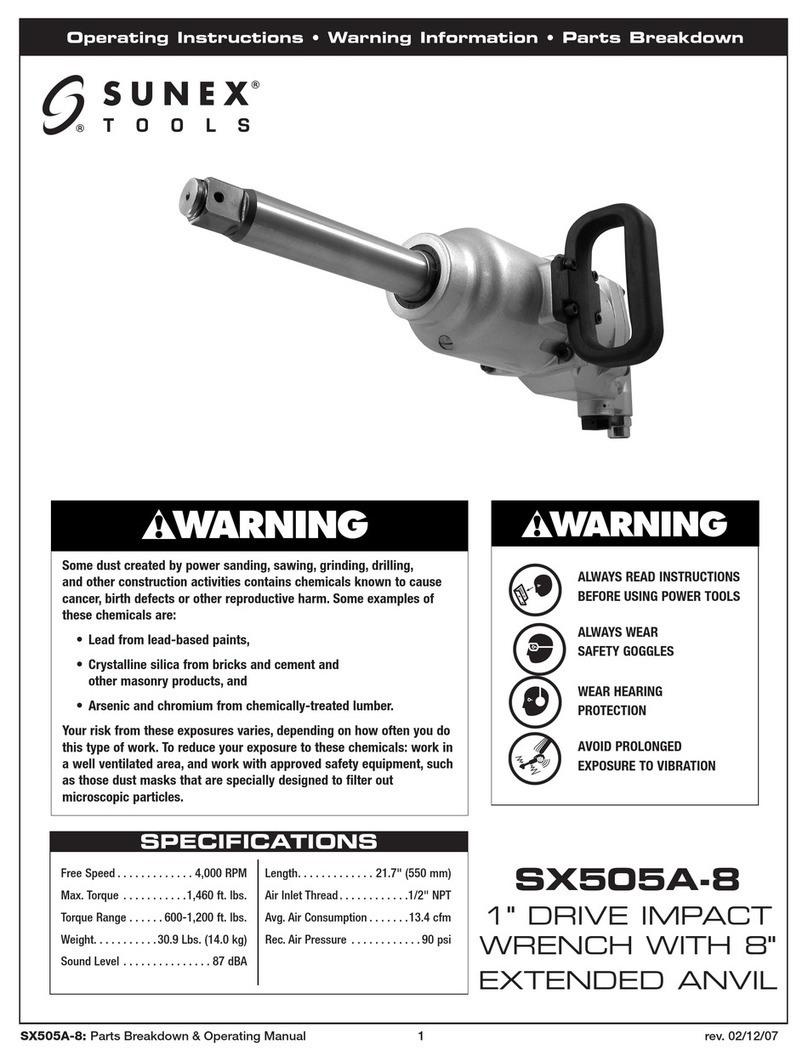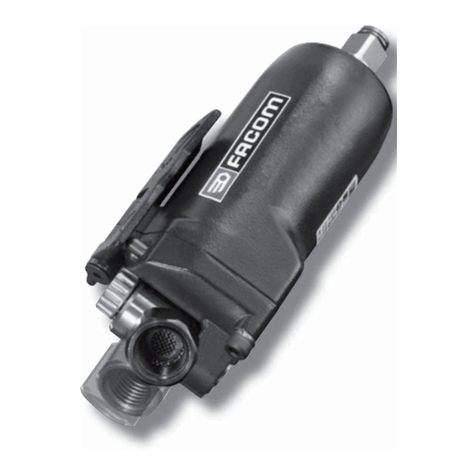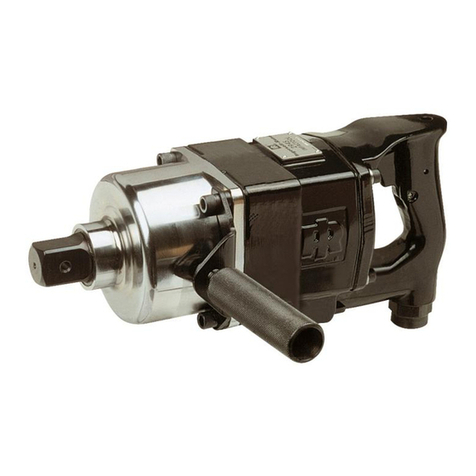
8ENGLISH
NOTE: De p e n d i n g o n t h e c o n d i t i o n s o f u s e a n d t h e
ambient temperature, the indication may dier slightly
from the actual capacity.
NOTE: The rst (far left) indicator lamp will blink when
the battery protection system works.
Tool / battery protection system
The tool is equipped with atool/battery protection sys-
tem. This system automatically cuts o power to the
motor to extend tool and battery life. The tool will auto-
matically stop during operation if the tool or battery is
p l a c e d u n d e r o n e o f t h e f o l l o w i n g c o n d i t i o n s :
Overload protection
When the battery is operated in amanner that causes
it to draw an abnormally high current, the tool automat-
ically stops without any indication. In this situation, turn
the tool o and stop the application that caused the tool
t o b e c o m e o v e r l o a d e d . T h e n t u r n t h e t o o l o n t o r e s t a r t .
Overheat protection
When the tool or battery is overheated, the tool stops
automatically. In this case, let the tool and battery cool
b e f o r e t u r n i n g t h e t o o l o n a g a i n .
NOTE: W h e n t h e t o o l i s o v e r h e a t e d , t h e l a m p b l i n k s .
Overdischarge protection
When the battery capacity is not enough, the tool stops
automatically. In this case, remove the battery from the
tool and charge the battery.
Protections against other causes
Protection system is also designed for other causes
t h a t c o u l d d a m a g e t h e t o o l a n d a l l o w s t h e t o o l t o s t o p
automatically. Take all the following steps to clear the
causes, when the tool has been brought to atemporary
h a l t o r s t o p i n o p e r a t i o n .
1.
Turn the tool o, and then turn it on again to restart.
. Charge the battery(ies) or replace it/them with
recharged battery(ies).
. Let the tool and battery(ies) cool down.
If no improvement can be found by restoring protection
system, then contact your local Makita Service Center.
Sw itch action
CAUTION: Before installing the battery car-
tridge into the tool, alw ays check to see that the
sw itch trigger actuates properly and returns to
the " OFF" position w hen released.
To start the tool, simply pull the switch trigger. Tool
speed is increased by increasing pressure on the switch
t r i g g e r . R e l e a s e t h e s w i t c h t r i g g e r t o s t o p .
Fig.3: 1. S w i t c h t r i g g e r
NOTE: The tool automatically stops if you keep pull-
i n g t h e s w i t c h t r i g g e r f o r a b o u t 6 m i n u t e s .
NOTE: While pulling the switch trigger, any other
b u t t o n s d o n o t w o r k .
Reversing sw itch action
CAUTION: Alw ays check the direction of
rotation before operation.
CAUTION: Use the reversing sw itch only after
the tool comes to a complete stop. C h a n g i n g t h e
direction of rotation before the tool stops may dam-
a g e t h e t o o l .
CAUTION: W hen not operating the tool,
alw ays set the reversing sw itch lever to the neu-
tral position.
T h i s t o o l h a s a r e v e r s i n g s w i t c h t o c h a n g e t h e d i r e c t i o n
o f r o t a t i o n . De p r e s s t h e r e v e r s i n g s w i t c h l e v e r f r o m t h e
A s i d e f o r c l o c k w i s e r o t a t i o n o r f r o m t h e B s i d e f o r c o u n -
t e r c l o c k w i s e r o t a t i o n .
W h e n t h e r e v e r s i n g s w i t c h l e v e r i s i n t h e n e u t r a l p o s i -
t i o n , t h e s w i t c h t r i g g e r c a n n o t b e p u l l e d .
Fig.4: 1. R e v e r s i n g s w i t c h l e v e r
Electric brake
T h i s t o o l i s e q u i p p e d w i t h a n e l e c t r i c b r a k e . If t h e t o o l
consistently fails to quickly stop after the switch trigger
i s r e l e a s e d , h a v e t h e t o o l s e r v i c e d a t a M a k i t a s e r v i c e
c e n t e r .
Lighting up the front lamp
CAUTION: Do not look in the light or see the
source of light directly.
Fig.5: 1. F r o n t l a m p
P u l l t h e s w i t c h t r i g g e r t o t u r n o n t h e f r o n t l a m p s . T o t u r n
o, release the switch trigger. The front lamps go out
approximately 1 seconds after releasing the switch
t r i g g e r .
To disable the front lamps, turn o the lamp status. To
turn o the lamp status, rst pull and release the switch
t r i g g e r . W i t h i n 10 s e c o n d s a f t e r r e l e a s i n g t h e s w i t c h
t r i g g e r , p r e s s a n d h o l d t h e b u t t o n f o r a f e w s e c o n d s .
When the lamp status is o, the front lamps will not turn
o n e v e n i f t h e t r i g g e r i s p u l l e d .
T o t u r n o n t h e l a m p s t a t u s a g a i n , p r e s s a n d h o l d t h e
b u t t o n f o r a f e w s e c o n d s .
Fig.6: 1. B u t t o n 2. S w i t c h p a n e l
NOTE: W h e n t h e t o o l i s o v e r h e a t e d , t h e f r o n t l a m p s
ash for one minute, and then the switch panel goes
o. In this case, cool down the tool before operating
again.
NOTE: To conrm the lamp status, pull the trigger
w h e n t h e r e v e r s i n g s w i t c h l e v e r i s n o t i n t h e n e u t r a l
position. When the front lamps light up by pulling the
s w i t c h t r i g g e r , t h e l a m p s t a t u s i s o n . W h e n t h e f r o n t
lamps do not light up, the lamp status is o.
NOTE: Use adry cloth to wipe the dirt o the lens of
t h e f r o n t l a m p s . B e c a r e f u l n o t t o s c r a t c h t h e l e n s o f
front lamps, or it may lower the illumination.

